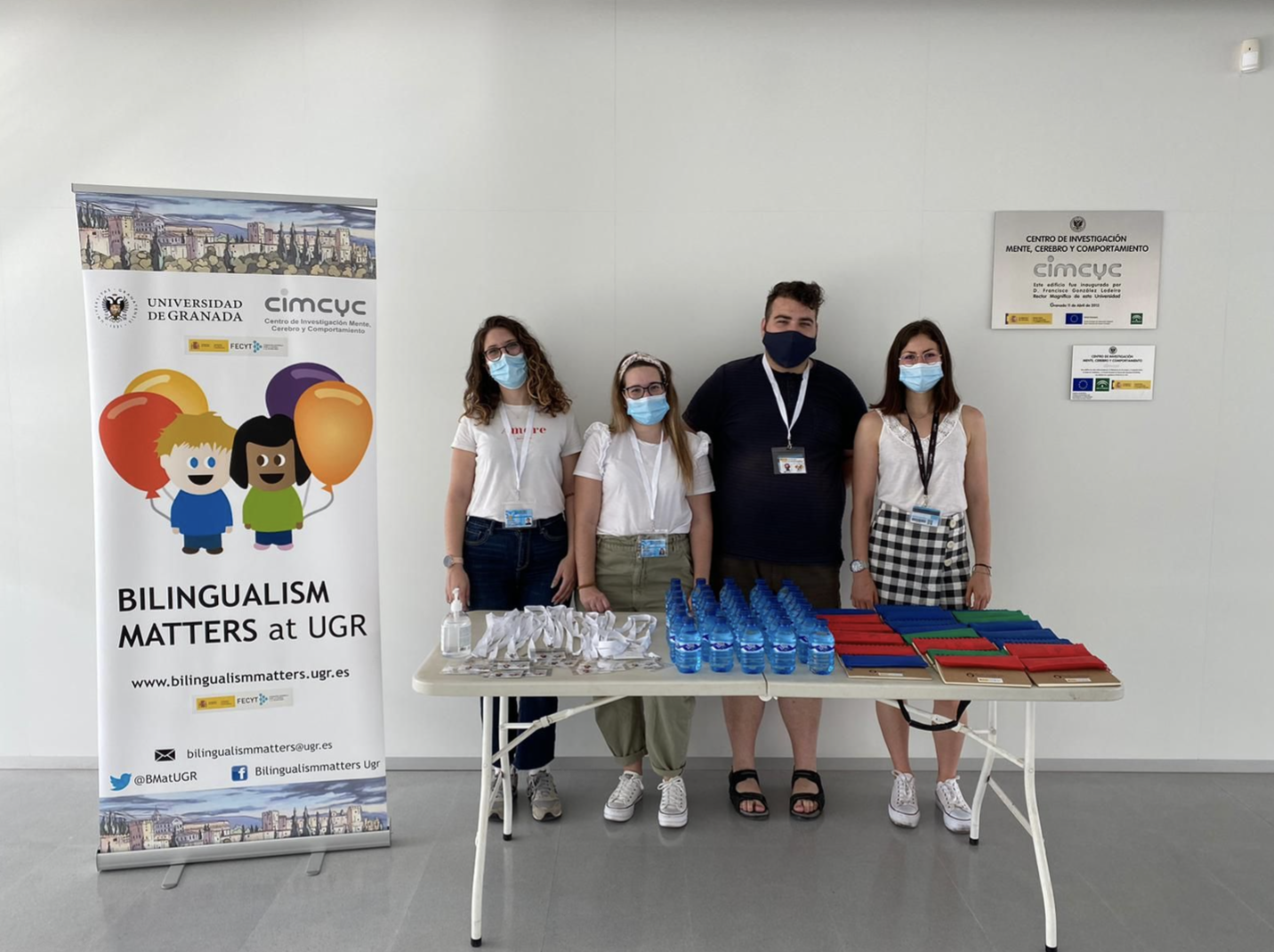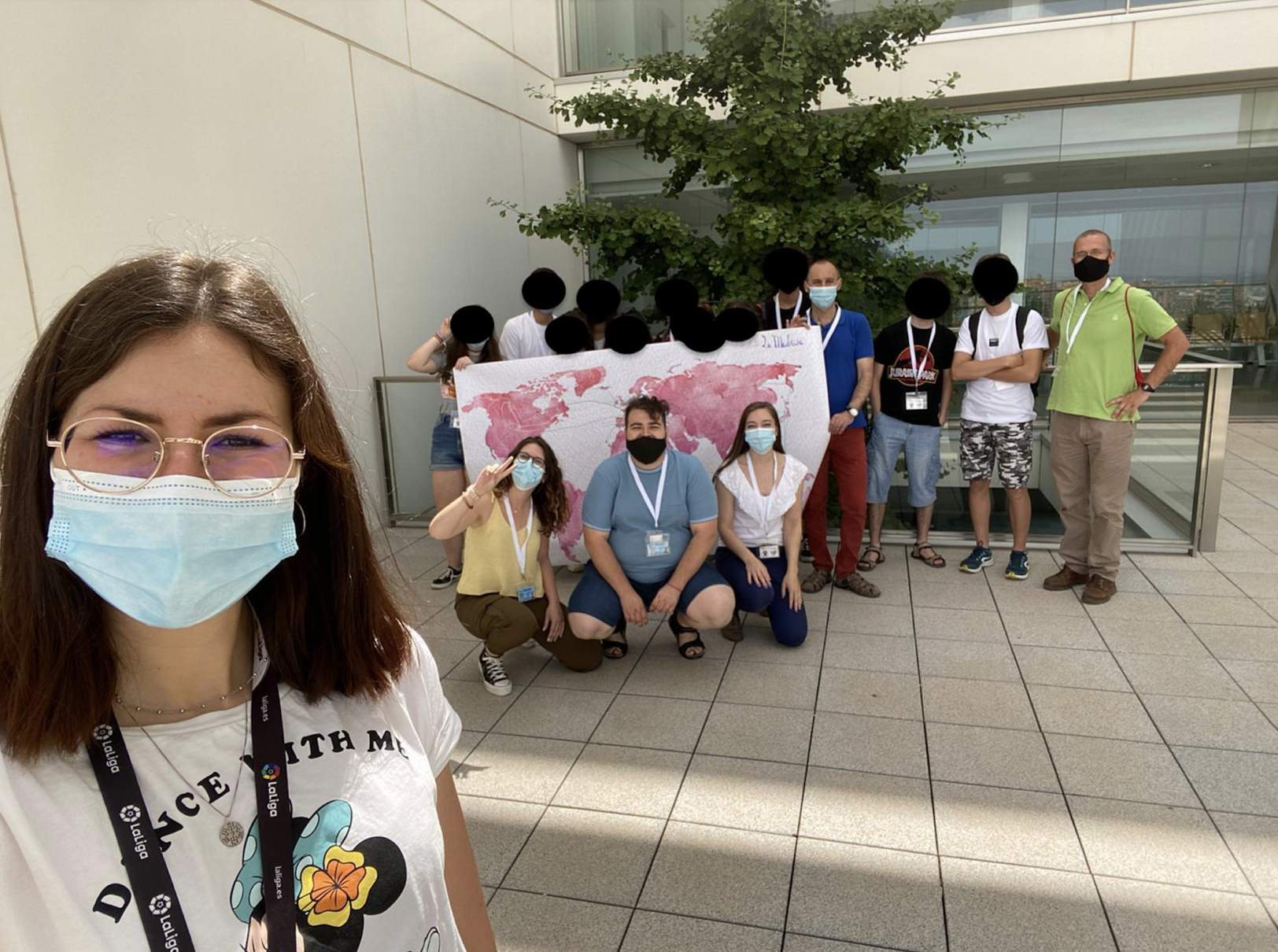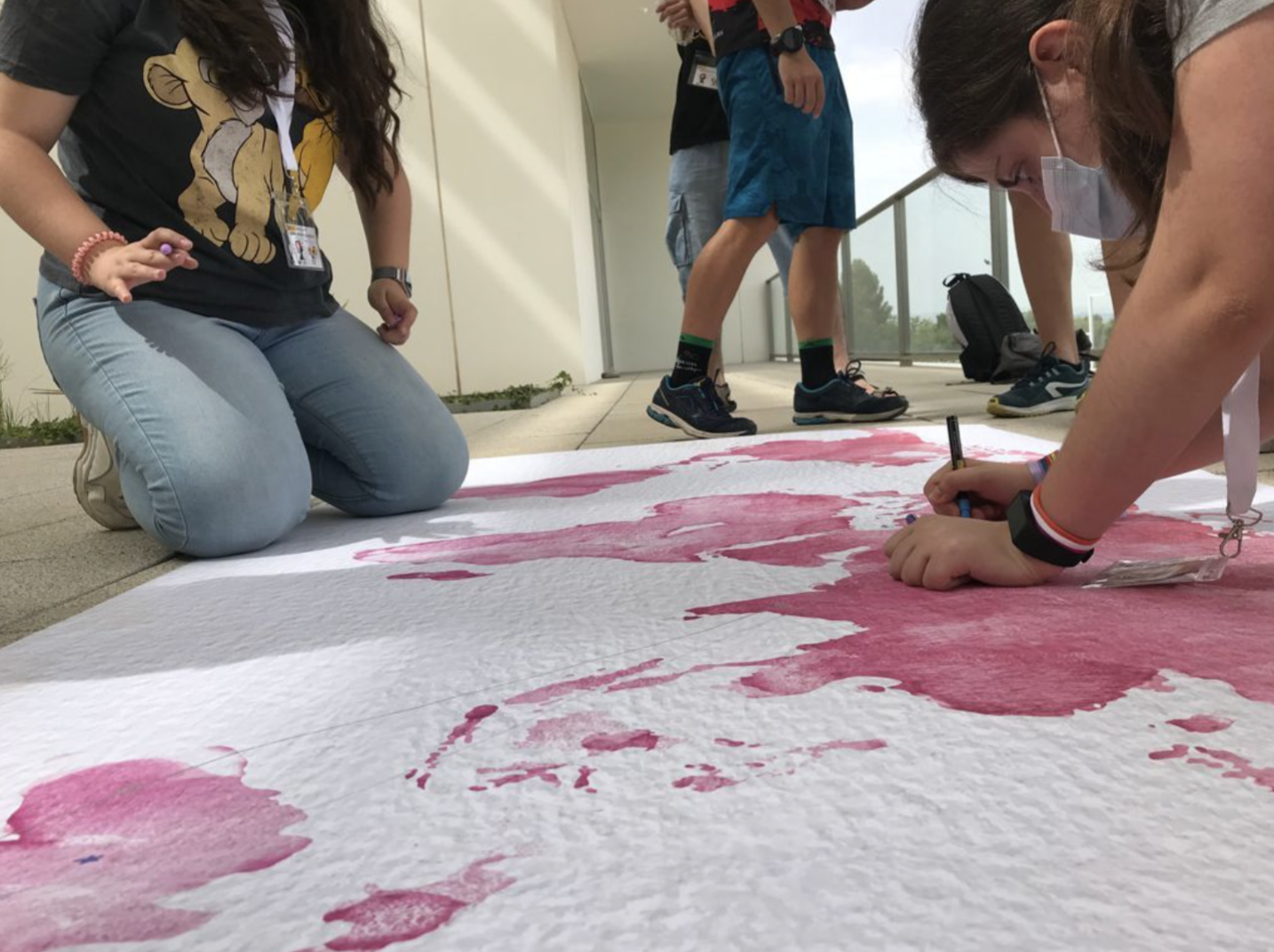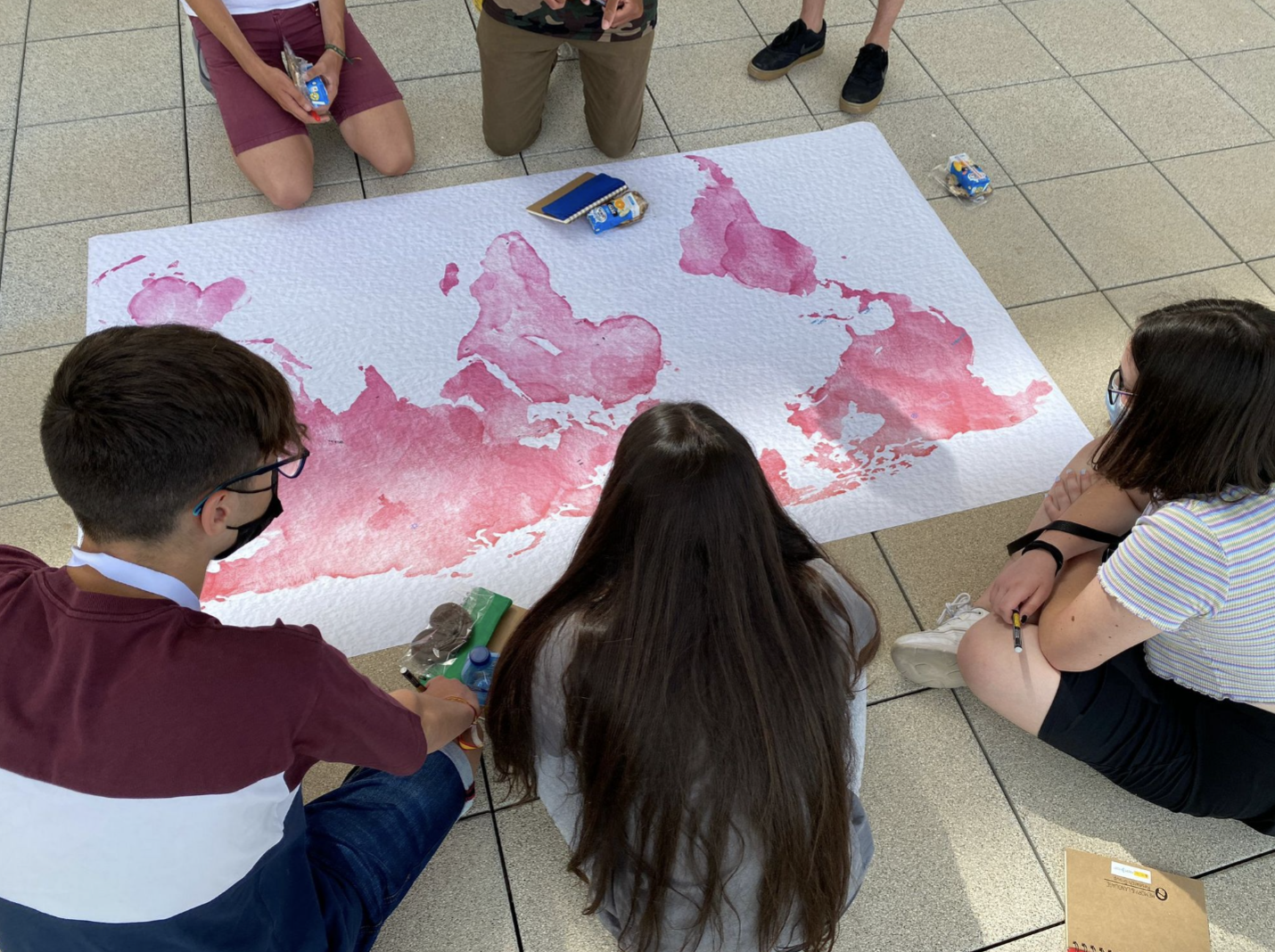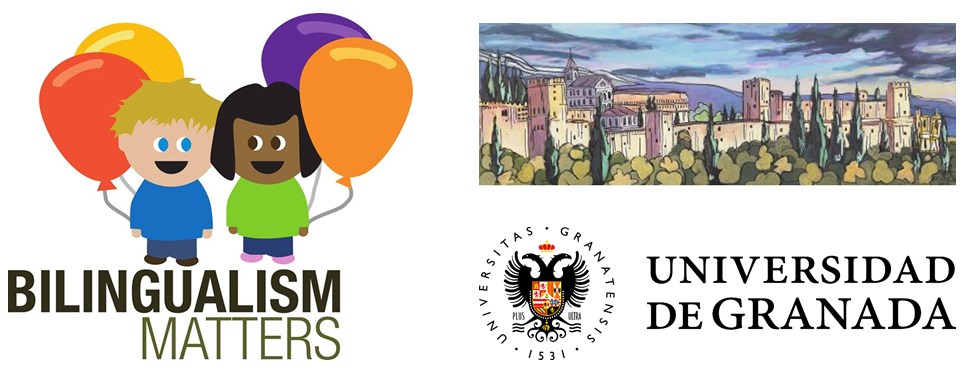Nuestro cerebro bilingüe // Our bilingual brain
El pasado martes 15 y miércoles 16 de junio, nuestro equipo de Bilingualism Matters Ugr (Marta Rivera, Antonio Iniesta, Cristina López-Rojas, Marta Reyes, y Melodie Bellegarda) tuvo el placer de recibir en las inmediaciones de nuestro centro de investigación a dos grupos de estudiantes de 4º ESO del IES La Madraza (Granada). Estas jornadas de puertas abiertas en el centro de investigación Mente, Cerebro y Comportamiento (CIMCYC) se llevan a cabo dentro del proyecto “¿Cómo conviven dos idiomas en el cerebro? Transfiriendo la investigación desde el laboratorio a la sociedad“, financiado por el FECYT y el Ministerio de Ciencia e Innovación (FCT-19-15358).
Last Tuesday and Wednesday, the 15th and 16th of June, our BM team (Marta Rivera, Antonio Iniesta, Cristina López-Rojas, Marta Reyes, and Melodie Bellegarda) had the pleasure of receiving two groups of 10th grade students from La Madraza High School (Granada) in our research center. This open house event at the Mind, Brain and Behavior Research Center (CIMCYC) was carried out within the project “How do languages co-exist in the brain? Relaying evidence from the laboratory to our society“, funded by the Spanish Foundation of Science and Technology and the Ministry of Science and Innovation (FCT-19-15358).
Las jornadas han ido dirigidas al alumnado de 4º de la ESO con el objetivo de presentar el ámbito científico como una oportunidad laboral, difundir los hallazgos científicos más relevantes en el tema del bilingüismo y mostrar las técnicas que utilizamos en neurociencia para estudiar este fenómeno.
The conference was aimed at students in their second year of high school with the objective of presenting the scientific field as a place for future job opportunities, disseminating the most relevant scientific findings on the subject of bilingualism, and showing the techniques used in neuroscience to study this phenomenon.
Al comienzo, las investigadoras dimos un pequeño kit de investigación a cada persona asistente (libreta y bolígrafo, tarjeta identificadora y agua). Con ello, el grupo asistente se dividió en dos subgrupos para respetar las medidas de seguridad y aforo impuestas por el COVID-19. En primer lugar, impartimos una breve charla para introducir el método científico y visibilizar el papel de la mujer en la ciencia. También aprovechamos para orientar laboralmente y presentar la carrera investigadora como una opción a seguir. Y ya, nos adentramos en el tema central: bilingüismo. Algunas preguntas que quisimos responder con nuestras intervenciones fueron ¿Qué significa ser bilingüe? ¿Qué importancia tiene el bilingüismo? ¿Cómo estudiamos este fenómeno desde el ámbito neurocientífico? Para ello, adaptamos tareas simples de laboratorio – una tarea de dictado y otra de nombrado – para ilustrar los fenómenos de facilitación e interferencia en palabras cognadas y el efecto de inhibición entre idiomas. Para concluir esta primera charla, desmentimos algunos mitos clásicos sobre bilingüismo.
To kick off the event, the researchers gave a small research kit to each person attending (notebook and pen, identification card and water). The group was divided into two subgroups to respect the security and capacity measures imposed due to COVID-19. First, we gave a brief presentation to introduce the scientific method and make the role of women in science visible. We also took the opportunity to provide career guidance and present the research as a possible career option. Then, we got into the main topic: bilingualism. Some questions we wanted to answer with our interventions were: What does it mean to be bilingual? Why is bilingualism important? How do we study this phenomenon from a neuroscientific point of view? To answer these questions, we adapted simple laboratory tasks in our presentation – a dictation task and a naming task – to illustrate the phenomena of facilitation and interference in cognate words and the inhibition effect between languages. To conclude this first talk, we debunked some classic myths about bilingualism.
Seguidamente, dimos un pequeño desayuno al aire libre mientras el alumnado iba visitando los laboratorios en grupos de tres personas. Allí, pudieron ver en primera persona dos de las técnicas que usamos en nuestro laboratorio. Para la técnica de Eye-tracking, recreamos una sesión experimental con Eye-Tracking, calibrando la mirada con la cámara y realizando algunos ensayos de prueba. Respecto a electroencefalografía (EEG), mostramos los gorros y explicamos el proceso de colocación. En el ordenador, vieron un registro ya realizado.
Afterwards, we had a small breakfast outdoors while the students visited the laboratories in groups of three. There, they were able to see firsthand two of the techniques we use in our laboratory. For the Eye-tracking technique, we recreated an experimental session with Eye-Tracking, calibrating the gaze with the camera and performing some test trials. Regarding electroencephalography (EEG), we showed the EEG caps and explained the fitting process. On the computer, the students saw a recording of brain activity from a past experiment.
Finalmente, cabe destacar que, durante el desayuno, el alumnado pudo señalar en un mural de mapamundi, por un lado, aquellos países que han visitado o idiomas que conocen; y por otro, aquellos países que quisieran visitar o idiomas aprender. Más tarde, unimos las marcas para recrear las redes de conectividad funcional que tiene lugar en nuestro cerebro. Sin duda, fue un encuentro enriquecedor en el que expusimos la rigurosidad del método científico y la importancia de aplicarlo en el ámbito de bilingüismo, reivindicamos el papel de la mujer en la ciencia, así como la presencia de idiomas minoritarios.
During breakfast, the students were able to mark on a world map mural the countries they had visited or languages they knew; and, the countries they would like to visit or languages they would like to learn. Later, we joined all the points on the map to recreate the functional connectivity networks that take place in our brain. Without a doubt, it was an enriching meeting in which we exposed the rigor of the scientific method and the importance of applying it in the field of bilingualism, we defended the role of women in science as well as the presence of minority languages.
Si quieres estar al día de estás y otras noticas relacionadas con nuestro trabajo, recordad, que podéis seguirnos en nuestras redes sociales // If you want to be up to date on all our activities, don’t forget to follow us on our social media: Twitter: @BMatUGR Facebook: BilingualismMatters UGR YouTube: BilingualismMatters UGR
